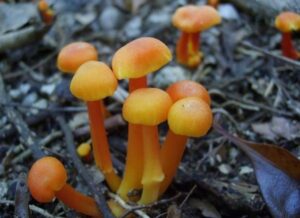Truly Magical Mushrooms Found to Eat Up Our Plastic Waste

Students from Yale University have published findings in the current issue of the journal Applied and Environmental Microbiology about a major discovery they made in the Ecuadorian jungle: A fungus that likes to eat plastic.
The fungus, identified as Pestalotiopsis microspora, was discovered during a two-week trip to the South American region. The findings revealed that the fungus can digest polyurethane—a common plastic—and can also do so in oxygen-deprived locations, such as deep inside a landfill.
Similar findings have been detailed by author and mycologist, Paul Stamets (Mycelium Running: How Mushrooms Can Help Save The World). Stamets discovered use of Oyster mushrooms and fungus-derived enzymes that are capable of breaking down various hydrocarbon-based toxins—like those found in the BP Gulf Oil Spill—in a process which he calls Mycoremediation.
Generally considered to be a safe plastic with few human health risks, polyurethane is a plastic polymer that can be either rigid or soft and is commonly found in items such as insulation, furniture cushions and mattresses, adhesives, shoe soles and car parts. Like all plastic it can be ingested by wildlife, and residue is found throughout oceanic eco-systems, causing concern from environmental advocacy groups. All plastics, especially in the production process, pose health and environmental risks from the chemicals involved. According to the Ecology Center, the health risks from plastics include lead, cadmium and mercury toxicity, carcinogens (from diethylhexyl phthalate) and endocrine disruption—known to cause cancer, birth defects, compromise immune function and lead to behavioral and developmental problems in children.
Keep in touch with Jill on Twitter @jillettinger
Image: robstephaustralia

